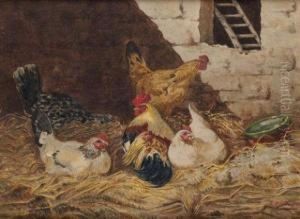Ernest Piot Paintings
Ernest Piot, born in 1826, is a relatively obscure figure in art history, and due to the limited available information about his life and career, it is difficult to construct a detailed biography. Moreover, there is no widely recognized death year recorded for him, which could be due to the fact that he may not have achieved significant fame or that historical records from the period are incomplete or have not been digitized.
Ernest Piot was a 19th-century French artist, known to some extent for his work in painting and engraving. During this period, France was a central hub for art, with Paris in particular being a thriving center for artists, intellectuals, and creatives. While the exact details of Piot's training and artistic education are not well-documented, it was common for artists of the time to study at institutions like the École des Beaux-Arts in Paris or under the tutelage of established painters.
Piot's artistic output would have been influenced by the major movements of his time, such as Romanticism, Realism, and the early stirrings of Impressionism. However, without specific works to reference, it is challenging to place him within the broader context of these movements or to assess his impact on the art world. It is possible that Piot's works were part of the Paris Salon exhibitions, which were the official art exhibitions of the Académie des Beaux-Arts in Paris and an important event for artists seeking recognition.
Due to the scant information on Ernest Piot, his legacy in the art world remains unclear. Should more information about his life and oeuvre come to light, art historians might be able to better appreciate his contributions to the arts. Until then, Ernest Piot remains a footnote in the vast history of 19th-century French art, representative of the many artists whose lives and works have only been partially recorded or recognized by posterity.
